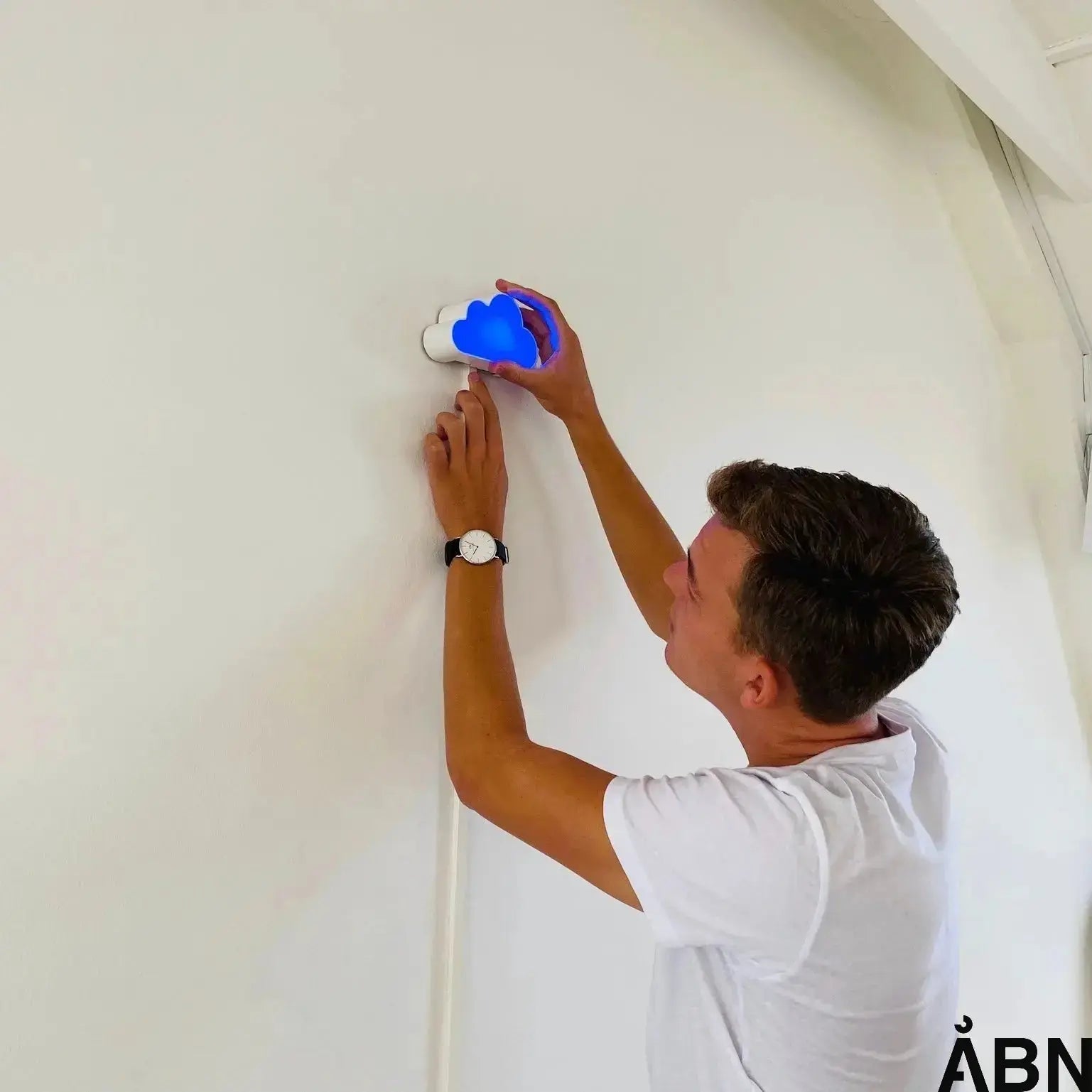A healthy indoor climate is essential for your well-being and productivity, and for the well-being and productivity of your employees. With an indoor air quality meter, you can monitor and optimize the air quality in your home, avoiding health problems and creating the perfect environment to work and live in.
What is an indoor air quality meter?
An indoor air quality monitor is a smart instrument that continuously monitors various parameters of your indoor air. These advanced devices measure everything from CO2 levels and humidity to temperature and volatile organic compounds (VOCs), so you always know if your air quality is optimal.
Why do you need an indoor air quality meter?
Health benefits
Poor air quality can lead to a number of health problems:
- Headaches and fatigue at high CO2 levels
- Irritated mucous membranes and eyes due to low humidity
- Increased risk of allergies and asthma attacks
- Impaired sleep quality and ability to concentrate
Injury prevention
An indoor air quality meter helps you to:
- Detect mold problems before they become visible
- Optimize ventilation and energy consumption
- Protect furniture and materials from moisture damage
- Create a productive work and study environment
The most important parameters to measure
Air is much more than CO2 or particles. That's why it's important that you choose an air meter that has many sensors, and preferably these:
CO2 Levels
The CO2 concentration is a key indicator of air quality. The Building Regulations (BR08) minimum requirement for rooms corresponds to approximately 1200 ppm, where the Danish Working Environment Authority recommends an upper value of 1000 ppm. When the CO2 level becomes too high, you may experience fatigue and difficulty concentrating.
Humidity
Indoors, the humidity in the air should be between 40-60 percent, with the level on the low end in winter and on the high end in summer. Optimal humidity is crucial for:
- Preventing mold and bacterial growth
- To reduce the risk of respiratory infections
- To protect against dry skin and mucous membranes
Temperature
The ideal indoor temperature is between 20-22 degrees Celsius for optimal comfort and health.
VOC (Volatile Organic Compounds)
VOCs come from cleaning products, furniture, and building materials and can negatively impact air quality.
Recommended air meters for indoor climate 2025
Premium Solution: THE CLOUD from ÅBN
SKYEN is an air quality meter that is a little out of the ordinary. If you are interested in having full control over your indoor climate, SKYEN is a fantastic choice. This meter not only monitors CO2, but also noise, TVOC (volatile organic compounds), temperature, light and humidity.
Advantages:
- Measures 6 different parameters including CO2
- A simple dashboard with a full overview can be accessed by simply scanning a QR code.
- Installs in 5 minutes and is maintenance-free for 7 years.
- Historical data storage
Budget-friendly alternatives
For those who want basic measurements without breaking the bank, there are several good options:
- Measures temperature and humidity
- Small plastic card that provides a simple overview
- Particularly suitable for the home.
Hygrometer/Humidity meter:
- Focuses on humidity and temperature
- Perfect for starting with indoor climate measurement
- Cheap and reliable solution
How to choose the right air meter for indoor climate
Consider your needs
- Basic monitoring
- Comprehensive control
- Allergy/asthma
- Special concerns
Important Features to Look for
- Accuracy: Search for calibrated sensors
- Connectivity: Devices with SIM cards require no setup
- Battery life: At least 5 years battery life if you want battery
- Display: Clear display with color codes
- Alarms: Warnings at critical levels
Installation and maintenance
Placing your indoor air quality meter
- Place the meter at eye level, away from direct sunlight.
- Avoid placement near windows, doors or heat sources.
- Choose a central location in the room for representative measurements
- Install multiple meters in large rooms or different floors
Calibration and maintenance
- Use auto-calibrated sensors or calibrate sensors annually for optimal accuracy
- Clean the device regularly with a soft cloth (no liquid or compressed air)
- Replace batteries according to manufacturer recommendations.
Common problems and solutions
High CO2 Levels
Problem: CO2 above 1000 ppm
Solution: Increase ventilation, reduce the number of people in the room, check the ventilation system and air out
Low Humidity (Below 40%)
Problem: Dry air, especially in winter
Solution: Install a humidifier or place water bowls on the radiator
High Humidity (Above 60%)
Problem: Risk of mold and bacterial growth
Solution: Improve ventilation, use a dehumidifier, check for leaks and air out.
High VOC levels
Problem: Chemical compounds from furniture or cleaning products
Solution: Increase ventilation, choose environmentally friendly products, let new furniture "air out" outside or in another room
Costs and investment
Prices for air meters for indoor climate
- Basic hygrometer: 200-500 kr
- CO2 meter: 800-2,000 kr
- Multisensor (as OPEN): 1,600-4,000 kr
- Professional systems: 5,000+ kr
Return on investment
An indoor air quality meter can save you money by:
- Reduce energy consumption through optimized ventilation
- Prevent costly mold repairs
- Improve family health and reduce medical bills
- Increase productivity in the home office
The future of indoor climate measurement
Smart building integration
Modern indoor air quality meters integrate with smart building systems and can:
- Automatically control ventilation and air conditioning
- Send notifications
- Create reports on air quality trends
- Integrate with existing systems.
The SKY from ÅBN integrates with your ventilation using MODBUS and your systems using openAPI.
Therefore, you should buy a air meter for indoor climate
An indoor air quality monitor is a valuable investment in your health and comfort. By monitoring CO2, humidity, temperature and other important parameters, you can create the optimal indoor climate and avoid health problems.
Start by identifying your needs - whether you want basic monitoring or comprehensive control - and then choose the right solution. Remember to position your air meter correctly and maintain it regularly for best results.
With the right indoor air quality meter and the tips we have shared, you are well on your way to creating a healthier and more comfortable home for you and your family.
Do you need help choosing the right air meter for indoor climate? Contact us for personal advice and the best prices on the market.









